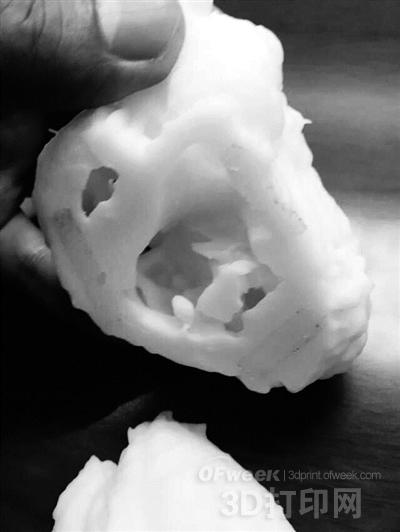OFweek's 3D printing network has long been exploring the potential of 3D bio-printing technology. In recent years, numerous hospitals around the world have successfully integrated 3D printing into clinical medicine. From 3D printed ankles and prosthetic hands to 3D printed ears, what once seemed impossible is now becoming a reality.
Three months after birth, a baby known as "Morning" (a pseudonym) was frequently hospitalized due to pneumonia. After a thorough medical examination, doctors discovered that his heart had an unusual structure — he was born with a "hole," requiring immediate surgery. However, after the first operation, complications arose: the hole in the heart was more than initially detected, and the child couldn't be weaned off the ventilator. What could be done?
To better understand the condition, the medical team used 3D printing to create a miniature model of the baby’s heart. This allowed them to simulate the surgery multiple times, refining their approach before the second operation. Eventually, they succeeded in closing the holes, giving the child a new chance at life.

**A 3-Month-Old Baby Struggles with Congenital Heart Disease**
From the moment Morning was born, his parents were worried. His body was weak, and he was constantly being taken to the hospital. By the time he was three months old, he had been hospitalized three times due to repeated bouts of pneumonia.
What was wrong with this child? In early July, the family brought him to Nanjing Children's Hospital for further evaluation. After a detailed medical history and examination, the doctors suspected a heart problem and referred the baby to the cardiothoracic surgery department.
Dr. Sun Jian, deputy chief physician of cardiothoracic surgery, conducted a thorough assessment and found that Morning had a complex and severe form of congenital heart disease. He had multiple ventricular septal defects and a large atrial septal defect, larger than 2 cm. In simple terms, his heart had holes that caused blood to mix abnormally, leading to high pulmonary pressure and frequent lung infections. The doctor also noted that the baby's mother had a similar heart condition, suggesting a possible genetic link.
**Should the Child Undergo Surgery?**
"Immediate surgery is necessary; otherwise, it could be life-threatening," Dr. Sun told the parents. However, due to the complexity of the condition and the baby's small size, the risk of surgery was extremely high. The family was torn — should they proceed with the operation or not? The father explained that the mother had undergone heart surgery as a child and had struggled with her health, making the pregnancy difficult. They cherished the baby deeply.
After a detailed discussion, Dr. Sun outlined the surgical plan and the risks involved. Eventually, the parents decided to go ahead with the operation.

Soft Pastel Drawing Pencils,Charcoal Colored Drawing Pencils,Drawing Natural Color Pencil,Sketch Drawing Pencil
Zhoushan Shenglan Trade Co., Ltd.  , https://www.seamiart.com